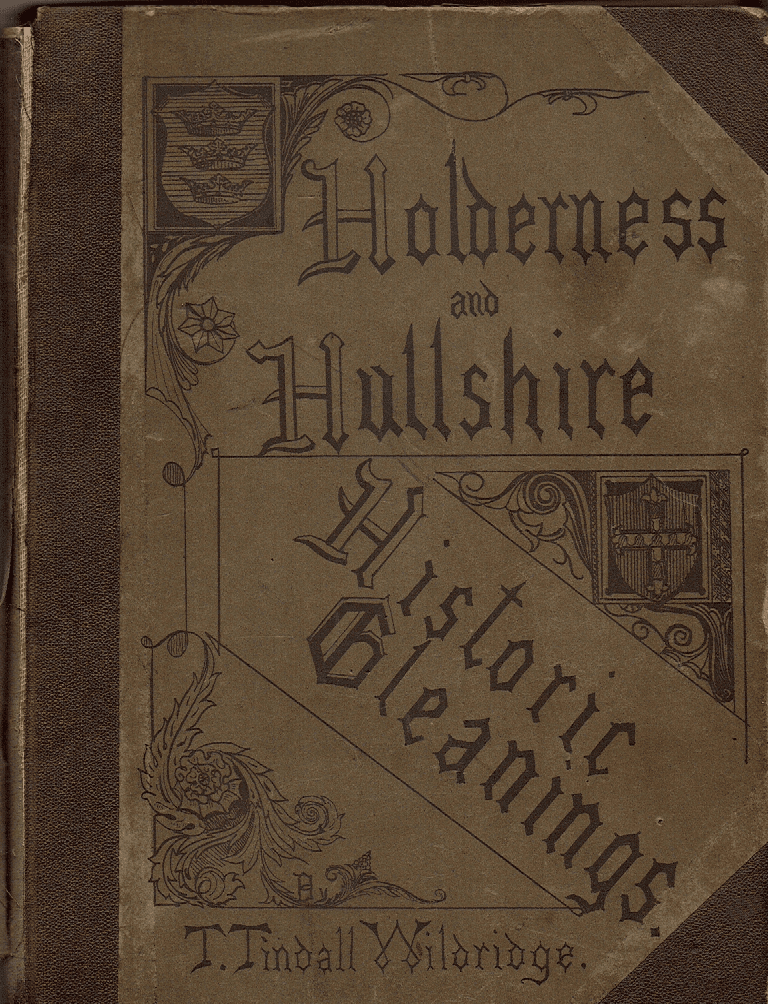I recently bought an old book being sold at the desk in Hull History Centre, presumably ‘taken off their shelves’, entitled ‘Holderness and Hullshire, Historic Gleanings’ compiled by T. Tindall Wildridge (see above) and published in 1886. Wildridge owned a local printing firm based on Savile St. and was one of the cluster of local historians who contested hypotheses about the history of Hull in the late 19th and early 20th centuries of which I made mention in my extended article ‘Hull in the Beginning’. The sub-title to the above is ‘A portfolio of pictures, poetry and prose’, articles on various topics related to the title.
The ‘Contents’ page lists 66 headings, too many to list here, but by way of example I will list five of the fairly wide ranging topics and five specific ones;
Fonts, their history with many local examples.
Some ancient crosses of Holderness.
The churches of Holderness.
A few old Manor-houses of Holderness (approx. 12).
Jottings in High St., Hull, 1885.

The old mansion house, Lowgate, Hull.
The Easter Sepulchre, Patrington.
The fight for Hornsea Fishery (a trial by combat).
The old town ditches of Hull.
Holderness and Hullshire’s name-children (a new term to me but referring to places with the same name as in this region).
I can scan the contents pages if any reader wants to see the full contents list.
Quite rightly the first page deals with ‘Definitions of Holderness and Hullshire’. Holderness we recognise as a physical area although Wildridge identifies it by its historical status as a ‘seigniory’. The term Hullshire was not officially abandoned until the 20th century but had been created in 1440 to define the inter-related parishes of Hessle, Ferriby (later North), Holy Trinity, Hull and St. Mary Lowgate, Hull. So Hull became known as a borough and county. It is interesting now in the context of the idea that the City’s boundary should be expanded to include its 21st century suburbs.
(to be continued)